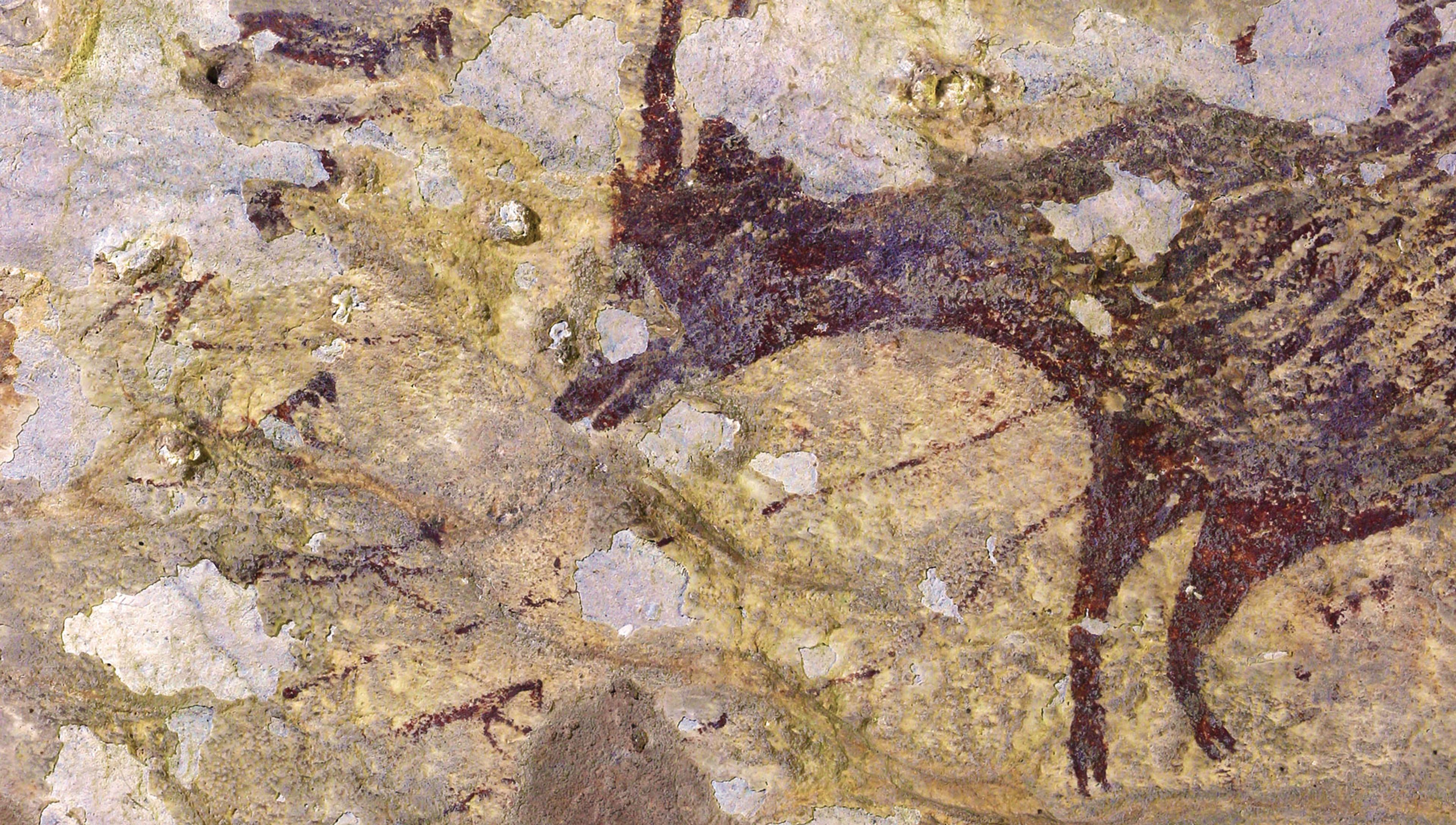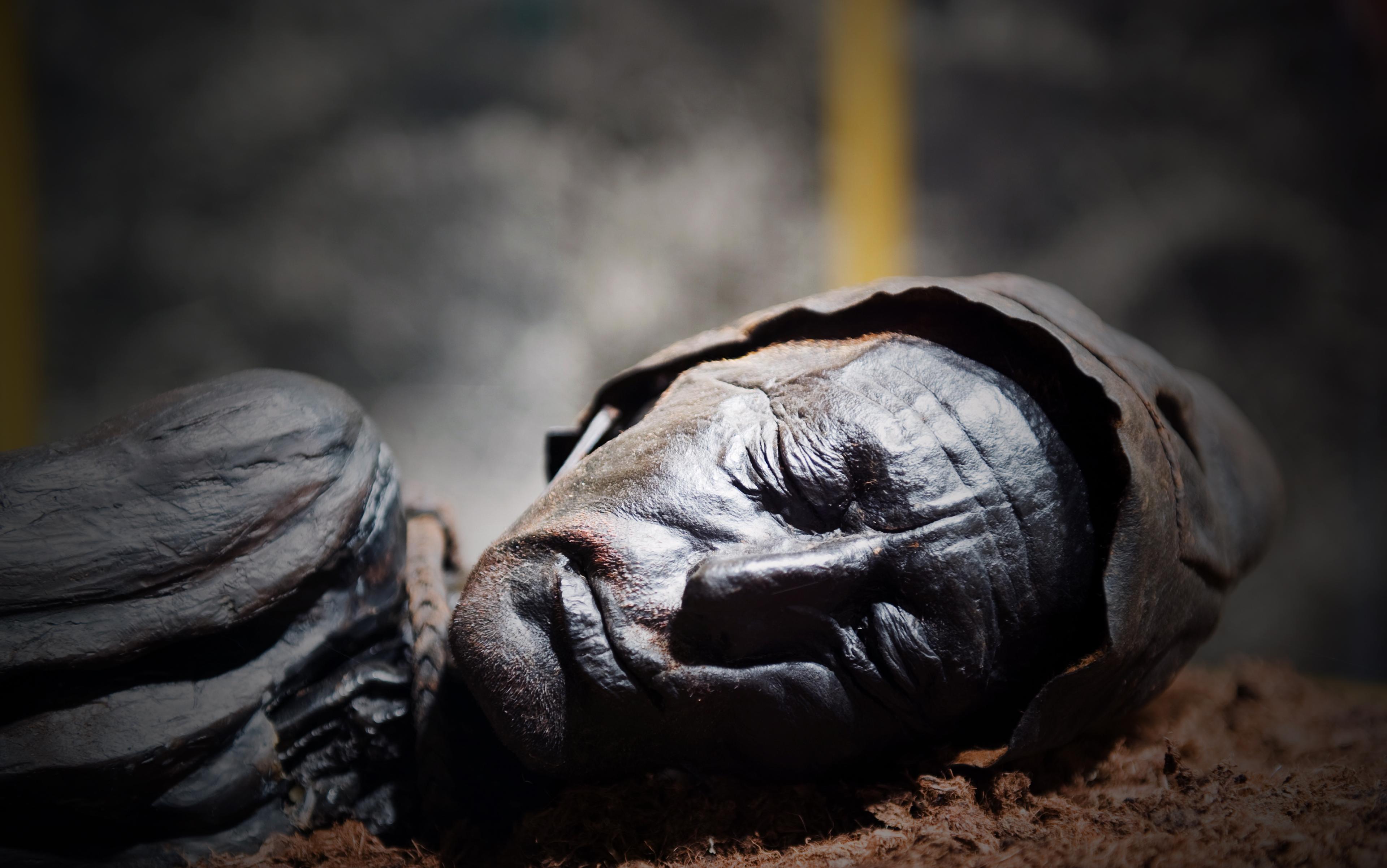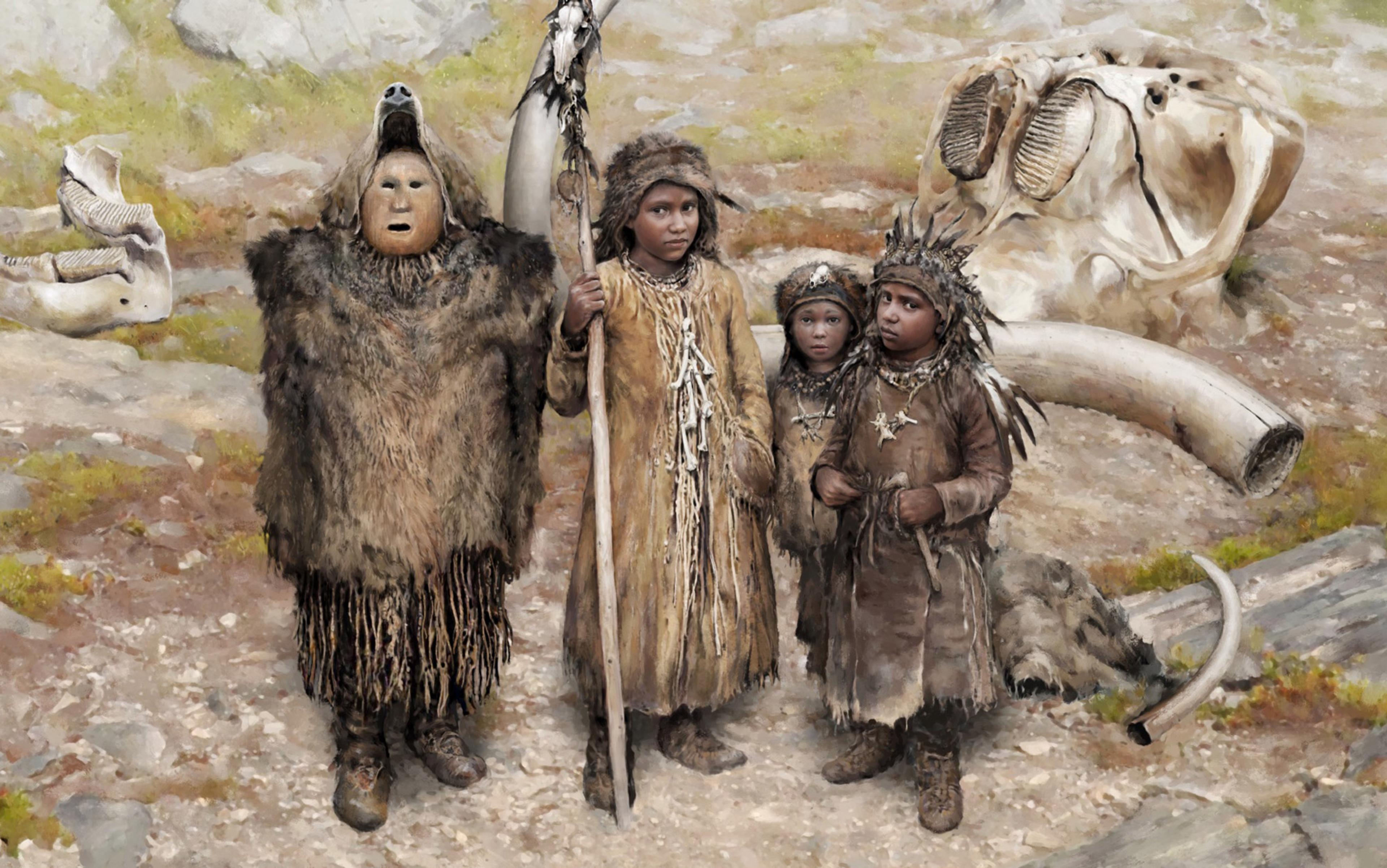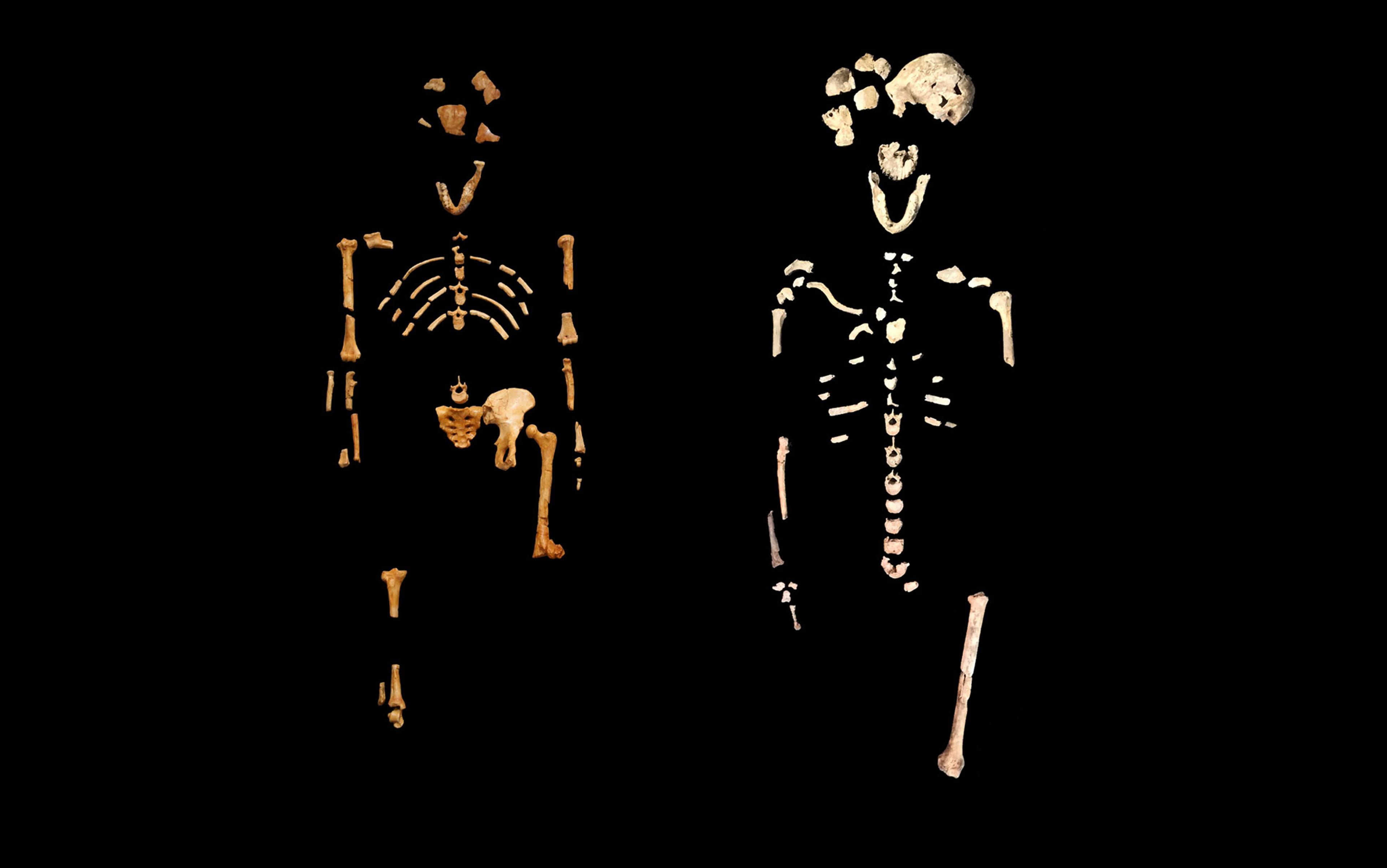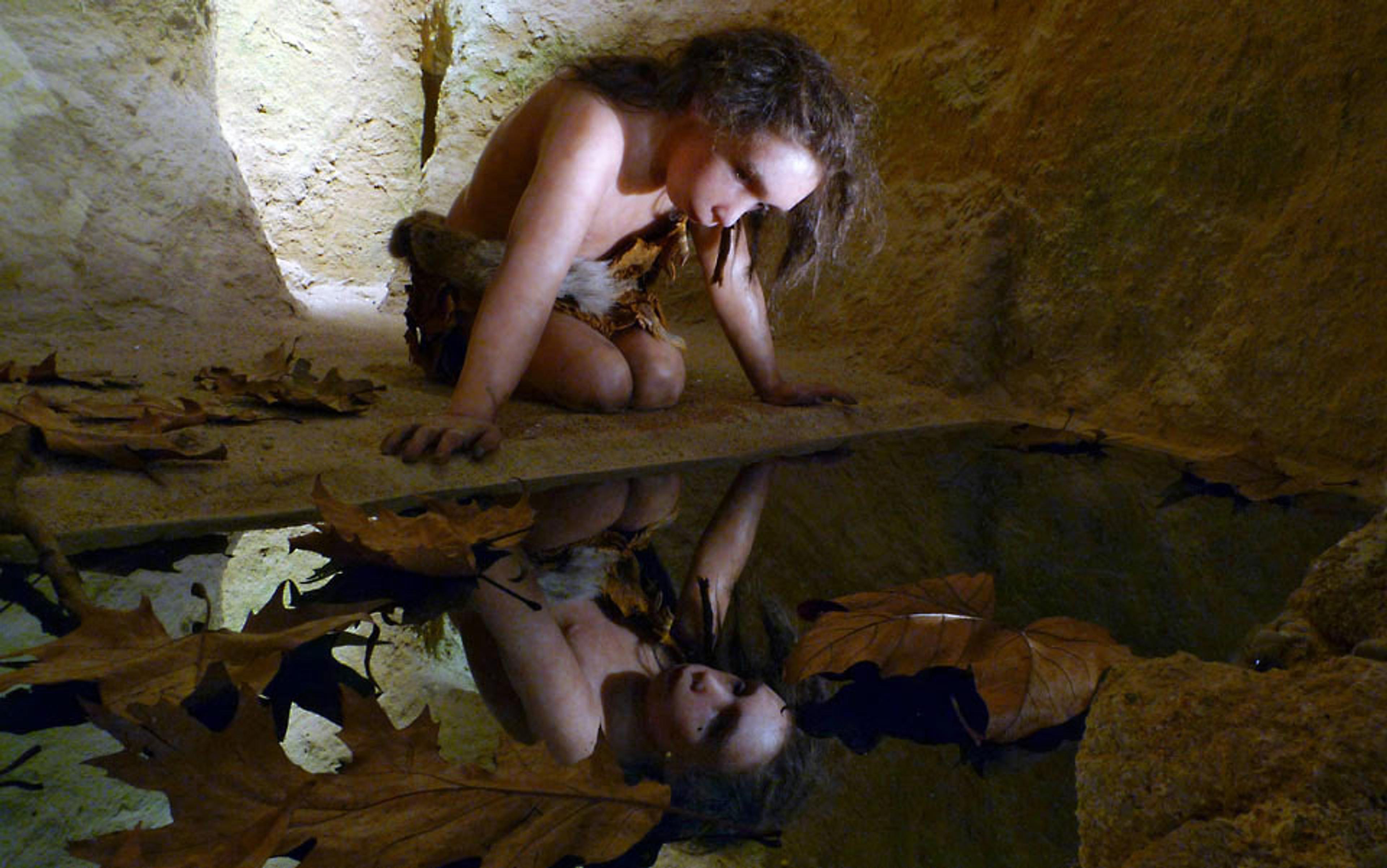In 1868, workmen near the hamlet of Les Eyzies-de-Tayac-Sireuil in southwestern France opened up a rock shelter and found animal bones, flints and, most intriguingly, human skulls. Work on the road was paused while a geologist, Louis Lartet, was called to excavate the site. What he discovered would transform our understanding of the origins of humanity.
Lartet unearthed the partial skeletons of four adults and an infant at the Cro-Magnon rock shelter, as well as perforated shells and animal teeth fashioned into necklaces, flint tools, a worked reindeer antler and an object crafted from ivory. The human remains were eagerly compared with fossils of an archaic species, called Neanderthal Man, found 12 years earlier in Germany. However, the 30,000-year-old skeletons of what became known as the ‘Cro-Magnon Men’ (at least one of them was a woman) were different to Neanderthals’, being more slender and having the same rounded skull with a high, vertical forehead as us, Homo sapiens.
Cro-Magnons lived at the same time as Neanderthals in Europe, during the last Ice Age, but they had a more advanced culture. They were identified as a prehistoric subspecies or race of humans that emerged in Europe and went extinct when our own ancestors arrived.
In the 150 years since their discovery, Cro-Magnon remains and artifacts have been found across Eurasia and beyond. This was a people capable of extraordinary creativity, who made stunning artworks depicting their natural world. Such works include a piece of mammoth tusk engraved with two beautifully observed reindeer crossing a river, carved at least 13,000 years ago and discovered near Toulouse in the 1860s, and the extraordinary Lion Man of Hohlenstein-Stadel cave, made 40,000 years ago and discovered in the Lone valley in Germany in 1939. These works took great skill, patience and time: the Lion Man – a 30 cm sculpture with a man’s body and a lion’s head – is carved from tough mammoth ivory, which researchers calculated would have taken about 400 hours. Cro-Magnons lived in societies that were successful enough to support craftsmanship – able to look after their artists with food and other resources, even during the harsh climate of the Pleistocene, when much of the landscape was covered in ice.
Perhaps the most famous example of Cro-Magnon creativity is the astonishing Lascaux cave complex, not far from Lartet’s skeleton site, whose richly decorated walls were discovered by teenagers in 1940. The imagination and ambition of the artists who created these colourful paintings 20,000 years ago, which include scenes of animals and even constellation maps, is remarkable. For instance, painted on the wall on the Shaft of the Dead Man cave is a bull, a bird-man and a bird on a stick – their outlines, with the eyes of the bull, represent the bright stars of the northern hemisphere’s Summer Triangle. When they were painted, this region of sky would never have set below the horizon and would have been especially prominent at the start of spring. Nearer to the entrance of the Lascaux cave complex is a magnificent painting of a bull with a map of the Pleiades star cluster hanging over its shoulder. Remarkably, within the bull painting, there are spots that might represent other stars found in the region that, today, forms part of the constellation of Taurus the bull. The people who made these detailed cosmic maps were making sense of their world through measurements of natural phenomena, and conveying this through beautiful, lasting ornamentation.
To put the Cro-Magnons in context, nothing beyond a few shaped flints had been discovered in the archaeology of earlier Stone Age humans. There appeared to be something different about the way that Cro-Magnons thought and behaved – far more like the way we think and behave. It led to the theory that modern human culture, including the use of symbolism and the development of complex language, began to emerge 40,000 years ago in a creative explosion in Europe. Over the past century, the term ‘Cro-Magnon’ has been replaced by the name ‘behaviourally modern humans’. This is to distinguish them from the more ancient, but also anatomically modern humans (Homo sapiens) that palaeontologists discovered. Human-origins experts, in other words, began to think that we are actually the direct descendants of the Ice Age artists – that they didn’t go extinct, they just developed into us over many generations.
Fossil evidence reveals that anatomically modern humans emerged in Africa at least 200,000 years ago. Recent finds have pushed that date back to perhaps 300,000 years. We also know from fossil and genetic evidence that people outside Africa are descendants of a human population that migrated from the continent roughly 80,000 years ago. These African ancestors took advantage of a rare wet spell, relying on a network of aquifer-fed springs, and ventured into the Middle East. From there, they moved slowly eastwards at a rate of an estimated kilometre per year.
Some of these migrants made it all the way to the great expanse of Australia, around 60,000 years ago, undertaking humanity’s first audacious sea voyage – an intrepid migration across 100 km of open ocean. In time, our African ancestors would also venture further east into Asia and north into Europe (around 45,000 years ago) and, finally, across an Arctic land bridge to the Americas (between 23,000 and 13,000 years ago), eventually occupying all the continents bar Antarctica and entirely replacing all other human species.
At some point, from around 40,000 years ago in Europe, we see evidence of these behaviourally modern humans in a sudden flourishing of cultural artifacts in the archaeological record. So what caused anatomically modern Homo sapiens to turn into behaviourally modern people? Was it a genetic switch that created a different type of cognitively superior person? These questions matter because the notion of a great leap forward in our species’ cognition occurring in Europe has contributed to a longstanding belief in there being some sort of European exceptionalism, which has been used to justify everything from colonial expansion to racist laws.
Neanderthals were thriving from Siberia to southern Spain when the first few families of modern humans made it out of Africa. These Africans encountered Neanderthals and, on several occasions, had children with them. Modern human DNA has been found in the genomes of Neanderthals, and everyone alive today who is of European descent – including me – has some Neanderthal DNA in their genetic makeup. Up to 2 per cent of our DNA is of Neanderthal origin, but we don’t all carry the same genes, so across the population around 20 per cent of the Neanderthal genome is still being passed on. That’s an extraordinary amount, leading researchers to suspect that Neanderthal genes must be advantageous for survival in Europe.
Interbreeding across different species of human would have helped accelerate the accumulation of useful genes, a process that would have taken much longer through evolution by natural selection. Neanderthal tweaks to our immune system, for example, might have boosted our survival in new lands. Many of these genes are associated with keratin, the protein in skin and hair, and some play a role in pigmentation – Neanderthals were redheads, apparently. Perhaps these visible variants were considered appealing by our ancestors and sexually selected for, or perhaps a tougher skin offered some advantage in the colder, darker European environment.
Perhaps the inbreeding with Neanderthals changed us cognitively too. Or perhaps Ice Age Europe was such a difficult environment to survive that only the genes of the cognitively advantaged made it through?
From the perspective of a European, as most of the archaeologists and evolutionary biologists have been, there is perhaps something very compelling about the idea that humans evolved some sort of superior intelligence or artistic skills once they were in Europe. In other words, people descended from European populations might be somehow more ‘behaviourally evolved’, or smarter, than those whose ancestors remained in Africa. Scientists in the 19th and early 20th centuries expended a lot of effort on claims for behavioural, cognitive, anatomical and even moral differences between Africans and Europeans, establishing a whole new field of eugenics in the process, which contributed to the development of the modern science of genetics.
We are of such intermixed ancestry that we are all related to each other within a few tens of generations
It is fitting then, that it has been advances in genetics, particularly in population genetics, that have shown up the fallacy of any biological definition of race, revealing that all humans are almost exactly the same genetically (anatomically and cognitively). The reason that all living humans are now so similar – much more similar than two chimpanzees – is because we emerged recently (no more than 300,000 years ago) as a relatively small population, and we have since experienced substantial bottlenecks and a lot of migratory breeding. Any two humans now differ by an average of 1 in 1,000 DNA base pairs (0.1 per cent), which shows remarkably low genetic diversity compared with great apes. There is, then, no basis for any claim for European distinction in innate intelligence, behaviour or morals. Europeans are no more ‘evolved’ than any other living people.
Furthermore, we are of such intermixed ancestry that we are all related to each other within a few tens of generations. Today, there are no significant cognitive or anatomical differences between people based on their nationality, skin colour or location – in fact, there are more genetic differences between people within the same population than there are between two populations. If you divide humans by continent, approximately 90 per cent of genetic variation between individuals can be found within these populations, and only 10 per cent between them. This is, in part, because we are all related relatively recently. You don’t have to go very far back in your family tree to find a common ancestor. In fact, everyone who was alive in Europe 1,000 years ago and has living descendants – that’s 80 per cent of them – is the ancestor of every European alive today. Some models also suggest that you only have to go back a few thousand years to find the most recent common ancestor for almost all present-day humans.
Nevertheless, the idea persists that something occurred in our past to make those original migrants out of Africa different and ‘modern’. Some believe it occurred before they left Africa, claiming evidence for a dramatic change in behaviour in South Africa 50,000 years ago, which then spread with migrants to Europe. However, geneticists have failed to find evidence of any genetic or cognitive ‘jump’ occurring in European or African populations around 40,000-50,000 years ago.
Another theory posits that a great disaster effectively slashed the entire human population to a tiny fraction of its former size, creating a species-changing event. It is known that during a time of very low population, genetic differences can have a more extreme effect – a phenomenon known as genetic drift. Some 74,000 years ago, there was a supervolcanic eruption at Toba in Indonesia. This was a massive climate-changing event, believed to have caused a volcanic winter lasting up to a decade, leading to a 1,000-year-long cooling of the Earth’s surface. It has been estimated that mammal populations were decimated and our own species reduced to a small population only in Africa, who survived by developing sophisticated cultural and behavioural strategies. These behaviourally modern survivors eventually repopulated Asia and then Europe from around 50,000 years ago.
However, this theory, too, seems unlikely. Several studies have now challenged the apocalyptic scenario and its effect on human sophistication. The most recent of these provides evidence of humans in Dhaba in central India prior to and after 74,000 years ago; they were using very similar tools to those that have been found at Homo sapiens sites in Africa from the same time. Furthermore, research found that these toolkits didn’t disappear at the time of the Toba supereruption or change dramatically soon after, indicating that human populations survived the event. In fact, Toba might not have been as climatically devastating as believed – researchers have found it had little impact on vegetation in Africa, for example.
So, if the people themselves were unchanged genetically or cognitively, then what did cause the explosion in cultural sophistication that we see?
One reason that we see a wealth of artifacts some 40,000 years ago in Europe is because those sites have been studied more extensively over the past centuries than sites in much of Africa – we can’t find where we don’t look. This is beginning to change and, in the process of exploring new sites, we’re discovering remarkable cultural treasures from Australia to Chad.
Another reason for the disproportionate numbers of finds from Eurasia is that the archaeological sites are cooler, drier, protected environments – often caves – where ancient material preserves better in comparison with the humid tropics. The ephemeral nature of decorative creations woven from grasses or carved from wood, shell and other natural materials means that these items are highly unlikely to survive over long periods of time. Even the bones of our early ancestors are rarely found. Yet, occasionally, in certain places, we see glimpses of preserved meaning in a personal possession that survives the odds. Dramatic hunting scenes, dating back 44,000 years (more than twice as old as the Lascaux works) were discovered in a cave in Sulawesi, Indonesia, only in the past few years, while finds from the same period in South Africa reveal that people were making complex hunting tools similar to those used by some indigenous people today.
-CREDIT-Ratno-Sardi.jpg?width=3840&quality=75&format=auto)
A humanoid with a bird-like head was among the eight therianthrope figures depicted in the Sulawesi cave painting. Courtesy Ratno Sardi/Griffiths University
The most ancient ornaments so far found were made by Neanderthals: worked eagle talons worn in Croatia, at least 130,000 years ago. However, we have also discovered ornaments made by our own species, such as perforated and coloured shell beads across multiple African sites and across to Israel, dating back 120,000 years. One of the earliest surviving necklaces was found in the sand and sediment layers of Blombus Cave, on the southern tip of South Africa. At least 65 small, teardrop-shaped ‘tick shells’ with intentional perforations and traces of ochre decoration reveal the common humanity we share with their last owner, some 75,000 years ago. The Blombus beads would not look out of place worn with contemporary necklaces.
Such finds are particularly significant because they reveal that their creators were capable of symbolic thought, overturning the belief that the ‘modern mind’ emerged only after 40,000 years ago in Europe. The Blombus necklace contained symbolism shared by the wearer and their group, and it might have held a wider cultural meaning recognised by a broader network. And, whoever made the jewellery, crafting it out of the multiple parts, thinking ahead, designing and planning for a finished article, almost certainly learned and discussed the technique with others. They were, in other words, behaviourally modern people, like us. And we see evidence of behavioural modernity, including hafted tools, decoration and fire-making going back more than 100,000 years into our ancestry, and at multiple sites. There is no reason to believe that the first Homo sapiens weren’t as capable of ‘behavioural modernity’ as we are, and research is beginning to support this.
Nevertheless, there is no doubt that certain places in certain periods have experienced explosions in cultural activity, creativity and innovation. Jewellery finds and complex stone tools became ubiquitous in Upper Palaeolithic sites in Europe. Similar cultural explosions also occurred in other parts of the world at different times, as we’re beginning to discover.
The reason for these bursts in cultural activity is not to do with changes in our ancestors’ individual brains but in their collective brains – changes resulting from human demography and networks. Humans have a unique form of culture that is cumulative, and evolves in diversity and complexity over time. We achieve our great technological mastery not by individually inventing every tool, behaviour or cultural practice for ourselves, but by learning from the collective knowledge held by our social group, practising, remembering the details and passing this knowledge to others and down the generations. Over time, these practices evolve changes, improvements and additions, enabling us to benefit from a growing body of collective cultural knowledge and from practices that have been filtered by an evolutionary selection process over generations.
Practices less crucial to survival, such as artworks, require a large enough group to support practitioners
The practices and technologies that accumulate in our cultural toolbox have themselves emerged through countless iterations as they’re copied over the generations. Rather than survival of the fittest, it’s helpful to think of evolution as the failure of the less fit. Among the diversity of processes and techniques, some will fail, becoming rare or eliminated over generations. The rest will continue to be copied, and be socially available. Environmental change can trigger a burst of cultural variation, just as in biological evolution. For instance, the major climatic and landscape changes that occurred in East Africa around 320,000 years ago have been associated with the emergence of complex cultural traits seen in modern humans, such as the manufacture and trade in sharp obsidian blades. This doesn’t mean that ‘necessity is the mother of invention’ but that new selection pressures acting on the existing variety of technologies and behaviours might have changed their successful transmission rate.
But the most important decider seems to be group size: usually, the bigger the group, the bigger the diversity of cultural practices. Those that are particularly successful at increasing a society’s population – such as practices that improve nutrition, fertility or reduce infant mortality – will, of course, produce more carriers of that practice, so spread faster and further. This is how technologies fundamental to survival, such as fire-making, rapidly became universal. Practices less crucial to survival, such as artworks, require a large enough group to support practitioners with food and other resources. But, once group size increases enough, cultural innovation accelerates, because the group then holds a diversity of cultural practices that can be combined to produce further practices, and so on exponentially. In other words, a tipping point is reached whereby larger, connected populations experience cultural explosions.
Geneticists recently discovered that the greatest population boom in prehistory occurred 40,000 to 50,000 years ago, which helps to explain a swathe of cultural explosions seen at this time, from present-day Germany to Indonesia. Researchers modelling ancient population densities during periods of rapid cultural acceleration found that the connection seemed to bear out. For instance, there was great similarity between the demographics of Palaeolithic Europe 45,000 years ago and Sub-Saharan Africa 90,000 years ago, both times of local explosions in cultural activity. Bigger, more culturally diverse populations can call upon a greater resource of potential solutions as the physical or social environment changes. They have more opportunities to adapt their cultural practices, so they are more resilient. So these societies could survive longer, giving their technologies and cultural practices longer to evolve. Evolution has no direction, but complexity takes time to build up through combinations of different cultural ideas and practices.
Similarly, the better a group’s connections to other groups – and the better the connections are within a group – the more chance for individuals to acquire new cultural practices and technologies. And the reverse is also true – small, isolated communities can experience a cultural evolution towards simpler, less diverse technologies, effectively losing culture.
The great flowering of culture we enjoy from our Cro-Magnon ancestors was not evidence of a cleverer, ‘more evolved’ people but because the demographic, social, environmental and cultural changes that occurred at this time in Europe drove cultural complexity. Ice-age populations might have been particularly dependent on trade networks for food and resources, and these would also have led to an exchange in cultural ideas and traits. And new environments produce cultural adaptations that would have been unnecessary for societies continuing to live in the same conditions. Cultural complexity takes time to build up, so generally the trend is towards a greater number of technologies and practices. This is not a reflection of the individuals’ biology or intellectual capabilities, but rather the complexity of their societies.
In the coming decades, with new techniques, we’ll uncover ever more evidence of early complex culture at sites across the world.
